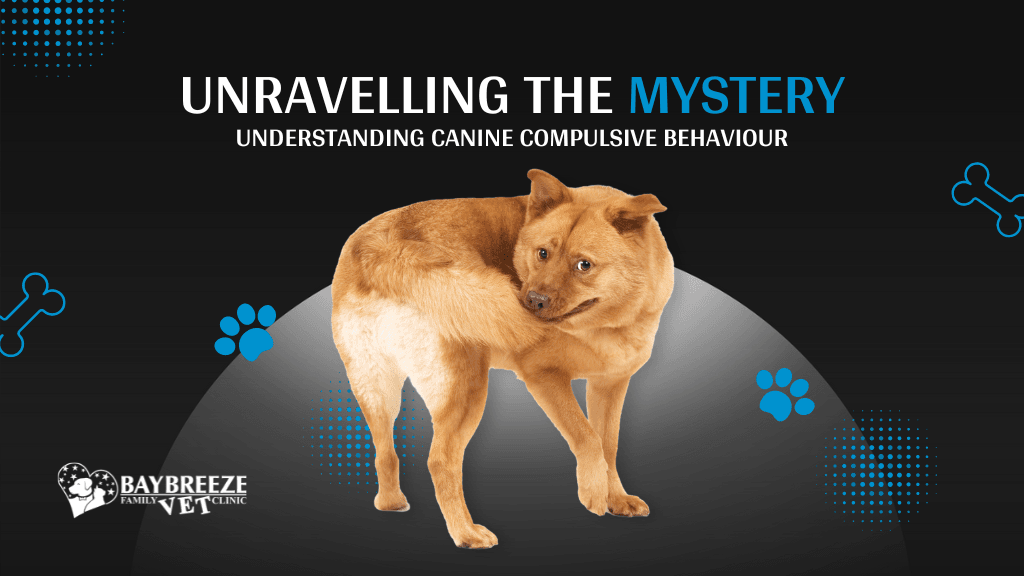Canine Compulsive Disorder: Recognising and Managing Repetitive Behaviours in Dogs
)
Dogs can sometimes exhibit repetitive behaviours that, when left unchecked, may develop into a more serious condition known as Canine Compulsive Disorder (CCD). This behavioural disorder, akin to human obsessive-compulsive disorder, leads dogs to engage in repetitive actions that can affect their wellbeing. While we cannot know if dogs experience obsessive thoughts, their compulsive behaviours clearly indicate distress. Understanding CCD and its treatment is crucial for ensuring your dog’s health and happiness.
Identifying the Symptoms of Canine Compulsive Disorder
Many behaviours associated with CCD may seem normal at first but can become extreme and frequent over time, leading to self-injury and disruption to daily life. Common symptoms of CCD include:
- Persistent licking or biting of the skin, often causing fur loss or raw patches, particularly around the tail and limbs.
- Repetitive behaviours that continue even when the dog is physically restrained.
- Obsessive tail chasing, sometimes resulting in injury to the tail.
- Compulsive actions become more frequent or last longer over time, disrupting regular routines.
- Certain behaviours may start after a specific event but often have no clear trigger.
- The dog may become less playful as their compulsive tendencies take hold.
Early intervention is key to preventing these behaviours from worsening and causing further harm to your dog.
What Causes Canine Compulsive Disorder?
CCD can be triggered by a combination of physical, emotional, and genetic factors. Recognising these triggers can help manage and prevent the disorder from developing.
- Pain and Discomfort: Chronic pain or discomfort from injuries or health conditions can cause dogs to obsessively focus on certain areas of their bodies. Even when the underlying issue is resolved, compulsive behaviours can persist as a learned habit.
- Environmental and Social Stress: Dogs are sensitive to changes in their environment, and disruptions to their routine or home life can trigger anxiety. Common stressors include moving homes, new pets or family members, or even daily separation from their owners. These stresses can lead to compulsive behaviours as dogs attempt to cope with their anxiety.
- Genetics: Certain breeds are genetically predisposed to compulsive behaviours. For example, Doberman Pinschers often exhibit acral lick dermatitis, while Cavalier King Charles Spaniels may engage in fly snapping or shadow chasing. Recognising breed-specific tendencies can help owners manage CCD more effectively.
Diagnosing and Treating Canine Compulsive Disorder
To diagnose CCD, your vet will perform a thorough examination to rule out other medical conditions that might be causing the behaviour, such as allergies, infections, or neurological disorders. Once CCD is confirmed, a multifaceted treatment plan will be recommended, focusing on reducing stress and managing compulsions.
- Physical Exercise: Regular exercise tailored to your dog’s breed and health needs helps manage stress and reduces the energy that can fuel compulsive behaviours.
- Mental Stimulation: Keep your dog’s mind engaged with puzzle toys, training exercises, or games. Providing mental challenges can help distract your dog from compulsive actions and give them a sense of purpose.
- Behavioural Distraction: When your dog begins engaging in compulsive behaviours, redirect their attention with alternative activities like playtime or training. Avoid using treats as a distraction, as this may reinforce the behaviour.
- Medication: In more severe cases, medication such as antidepressants or anti-anxiety drugs may be prescribed to help control compulsive behaviours. These medications often take several weeks to become fully effective and require consistent administration.
At Baybreeze Veterinary Hospital, we work closely with pet owners to develop personalised treatment plans that address both the symptoms and underlying causes of CCD. With the right approach and care, dogs with CCD can lead healthier, happier lives.
&geometry(269x80))





